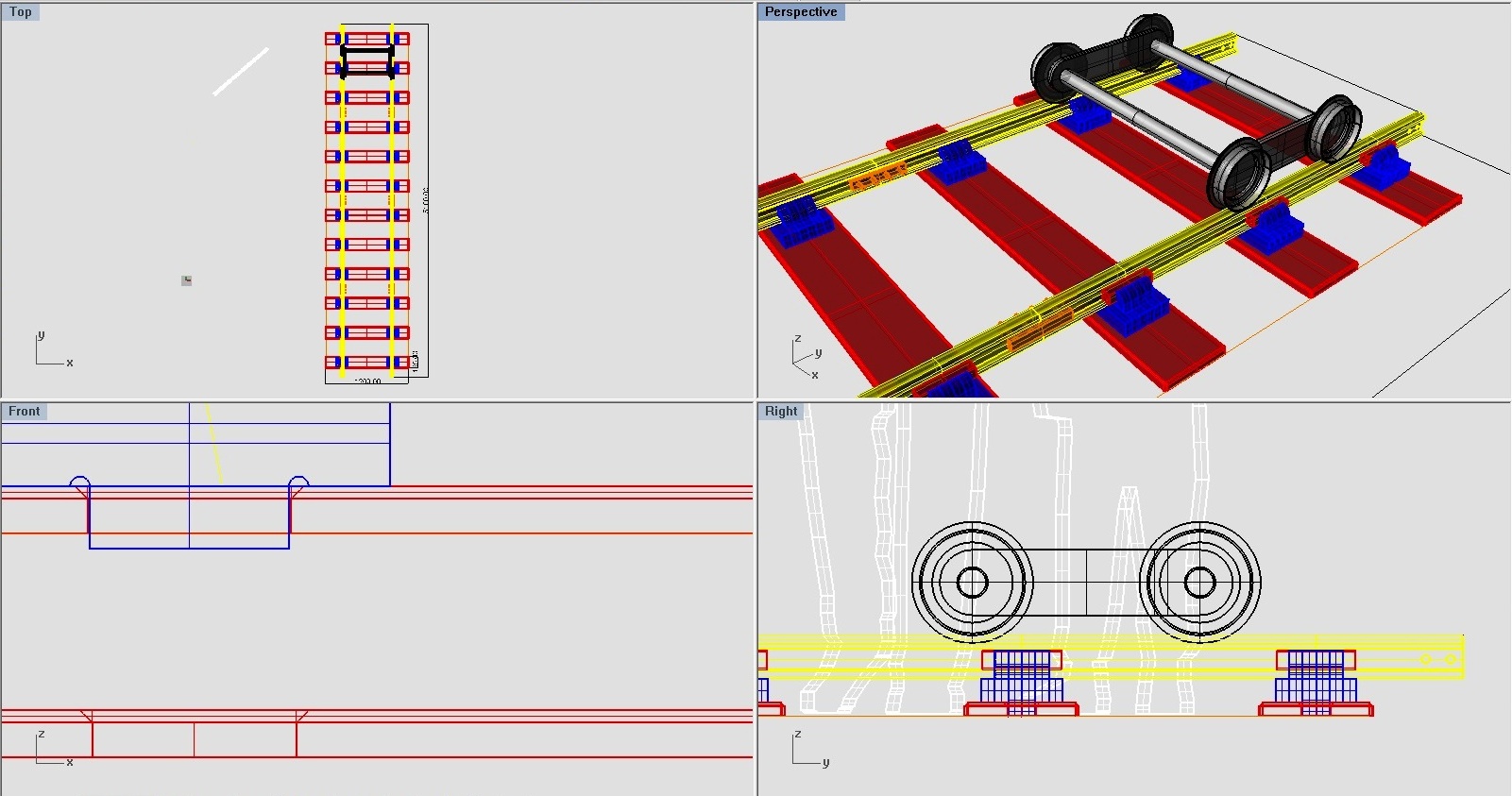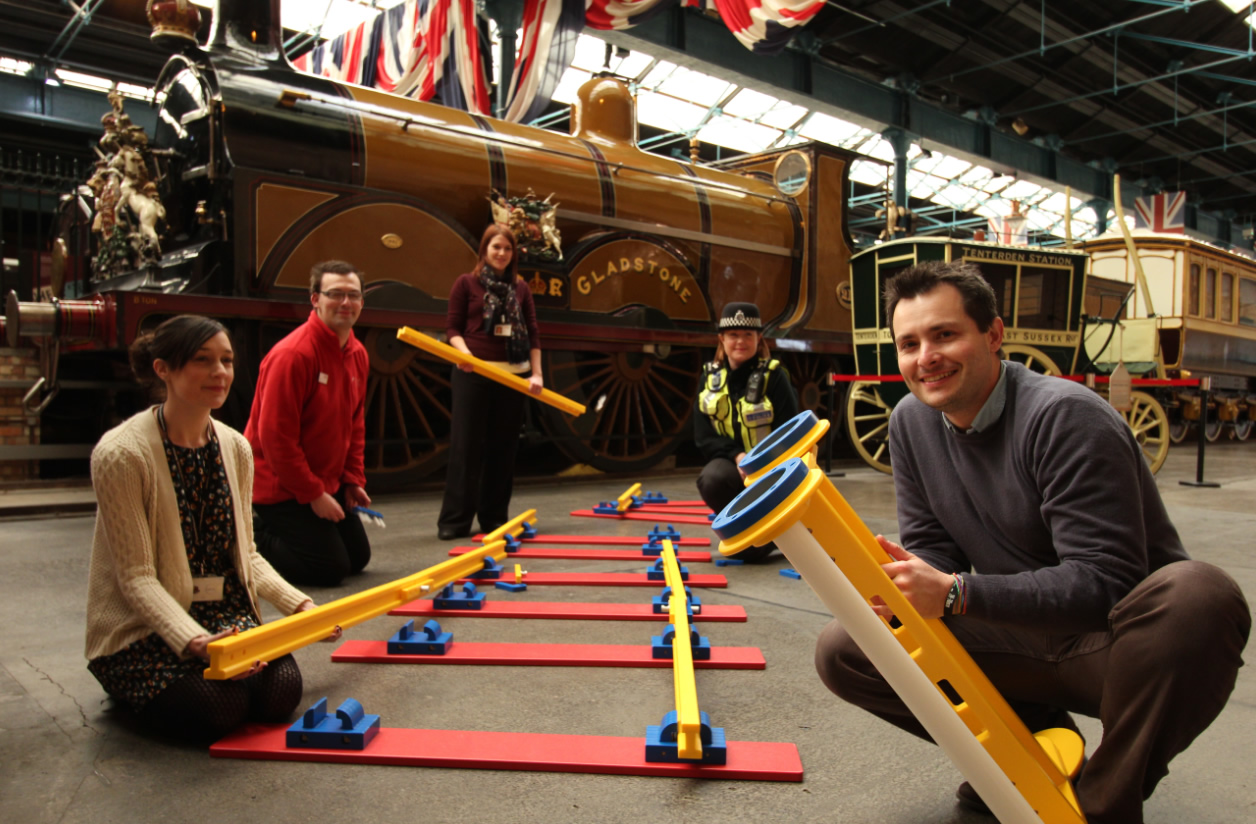Our Train for the Tracks event is all about the jobs you can get working on the railways. To help any young engineers discover a passion for the railway we wanted to create something that could be fun, yet at the same time educational. The plan was to do a track-laying exercise that was suitable for children but entirely accurate (though perhaps without the use of thermite). When it turned out nothing fitting our needs existed we turned to York based creative design company Paragon Creative Ltd. The following guest blog was written by Paragon’s model making department manager Alex Clarke and shares his experiences on building this unique children’s interactive.
Ever since my first visit with my father back when I was seven years old I have been a fan of the National Railway Museum and, harbouring more than just a passing interest in our railway heritage, I have returned many times over the years and wondered just how great it would be to have an example of my own model-making work on display for other visitors to enjoy. So you can imagine my excitement when the museum approached Paragon Creative to design and build an interactive exhibit called ‘Build A Railway Track’.
What did we do?
Paragon’s brief was to provide an exhibit, which would allow and encourage children, and those with learning difficulties, to assemble a stretch of standard gauge railway track and then test it with a small, railway ‘Test Truck’. The interactive had to be as faithful to real-world railway tracks as possible and follow the same assembly techniques in order to explain how the rail network’s permanent way is constructed. The interactive was to be built to ½ scale and with the help of the museum’s fantastic staff be both suitable and safe for the target audience to use successfully.
One of the hardest things about our job is designing something that is both easy to maintain by staff and durable enough to withstand vigorous and sustained use by children. There is a saying in our business that if something can be assembled by a professional in a week, it can be dismantled by children in minutes, so we knew we had our work cut out.
How did we do it?
The key to success for any project is choosing the right materials and construction technique. So, drawing on our years of experience and working closely with the client, we created a set of 3D CAD drawings of the exhibit which took into consideration both the requirements of the museum’s design brief along with a strategy to build the exhibit as efficiently and effectively as possible. Our solution was to provide a set of ‘kit-parts’ that are easily slotted together, are lightweight yet sturdy enough to take even the most robust use, require minimal maintenance and, above all, look like a real railway track!

For the construction of the track components we used High Density Polyethylene (HDPE); a material that through its widespread use in the construction of children’s playground equipment, we know will be more than up to the task! All of the components were cut out using our CNC router to ensure accuracy before being finished by hand to clean up and round off all the edges prior to being fittted together.

We designed and produced the ‘Test Truck’ in the same way, again being careful to ensure the finished item was as durable and maintenance free as possible, especially around the axles & wheels which need to run smoothly in order to roll well along the rails. Again, HDPE was the solution as not only is it an incredibly tough and resilient plastic. It also has very low friction and wearing properties and therefore requires no lubrication, thus keeping the maintenance down. After rigorous testing in our workshops the exhibit was ready to be installed at the museum.
This was a fantastic project for Paragon to be involved with and it was tremendously satisfying to build, made even more so by its positive reception by the staff at the museum who look forward to putting it through its paces over the coming months. Who knows? If this is a huge success we might need to make even more track, perhaps another ‘Test Truck’… and then perhaps even a pedal powered ‘Deltic’!
